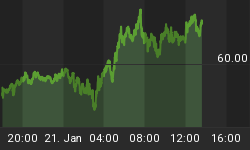In the first six months of the year remittances to Mexico totalled $19.1bn, a year-on-year (y-o-y) increase of 10.4%, according to Banco de México, the central bank. This included a record monthly total of $4bn in March – the month the virus was first detected in the country.
Positive trends have also been seen in the Central American countries of Guatemala, El Salvador and Honduras.
In Guatemala, remittances were up 1.4% y-o-y between January and July. While a slump in transfers in April weighed on the overall figure, remittances in June and July were up by 9.2% and 13.8% y-o-y, respectively, with the upward trend boding well for the rest of the year.
Next door in El Salvador, although cumulative remittances were down by 4.7% y-o-y over the first seven months of the year – largely on the back of a 40% fall in April – payments into the country have rebounded strongly to record y-o-y growth of 9.8% and 14.1% in June and July, respectively.
Similarly, Honduras’ remittances were down by 3.3% between January and July – reflecting a significant fall in April – but they recorded y-o-y growth of 15.2% and 1.2% in June and July.
The results are in stark contrast to predictions made earlier in the year. In April the World Bank forecast that remittances to low- and middle-income countries would fall by 19.2% in 2020, the sharpest decline in history.
This was largely based on fears that the economic downturn and health situation would leave many migrants without work or, in some cases, force them to return to their home countries.
Mixed global picture
Although remittances into some Latin American countries have been strong, the global trend is uneven.
Bangladesh and Pakistan received record-high inflows for the 2019/20 financial year – which ended in June and included the peak pandemic months of March and April – with the former’s July total of $2.6bn being a single-month record.
In contrast, however, countries such as the Philippines, Tajikistan and Brazil have experienced double-digit falls in remittance flows since the outbreak of the virus.
One explanation for the positive figures in some Latin American countries is that a large proportion of migrant workers are based in the US.
According to Pew Research, Mexico is the largest recipient of US remittances, with Guatemala, El Salvador, Dominican Republic and Honduras also inside the top 10. Related: Emerging Economies Could Get Left Behind In Race For COVID Vaccine
Although the unemployment rate for foreign-born Latin Americans in the US, at 13.5%, was slightly higher than the national average of 11.2% in June, some sectors with strong demand have a significant proportion of immigrant workers, including construction, agriculture, grocery retail and delivery services.
Adding to this, documented workers have been eligible to receive benefits from the US government’s federal unemployment programmes, allowing workers to continue to send money home.
Another significant factor is the shift in the value of currencies. For example, the Mexican peso has lost around 19% against the dollar since late February, meaning that any transfers sent home in the past few months have had an inflated value in Mexico.
Importance of remittances
The flow of remittances will be a crucial factor for many emerging markets moving forward as they continue their recovery from Covid-19 and the associated economic lockdown.
For many, inflows sent from citizens abroad account for a significant proportion of GDP, as seen in Tonga (37.6%), Haiti (37.1%), Kyrgyzstan (29.2%), Honduras (22%), El Salvador (21%), Guatemala (13.1%) and the Philippines (9.9%).
Meanwhile, given the World Bank’s predictions that foreign direct investment into emerging markets is expected to fall by 35% this year, the importance of remittances in 2020 is likely to be greater still.
With economic growth also expected to take a significant hit in emerging markets this year, the continued flow of remittances will be a crucial factor in ensuring that many families can continue to pay for essential items.
By Oxford Business Group
More Top Reads From Safehaven.com:
















